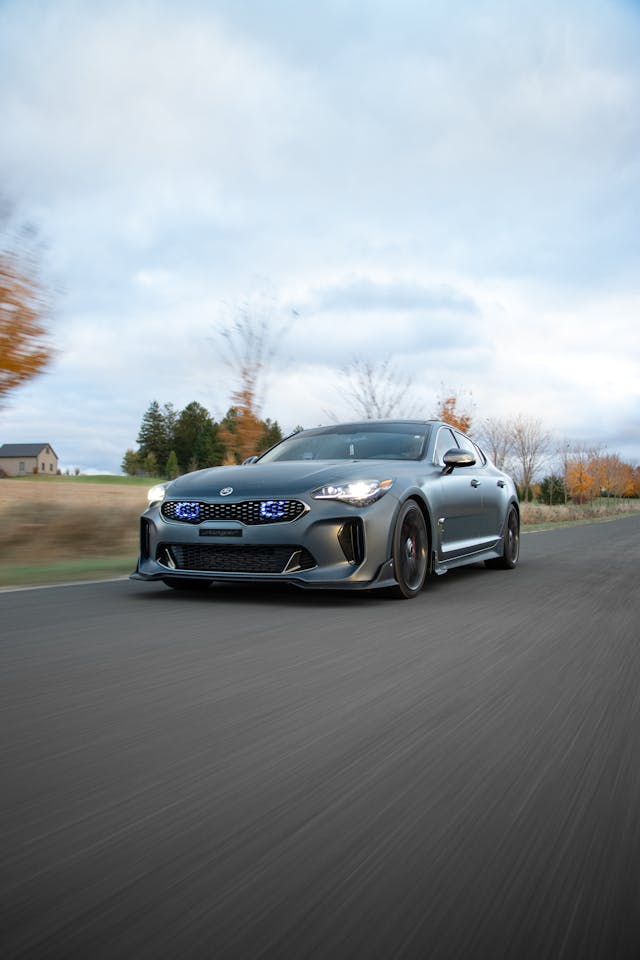Every adventurous spirit knows that the journey can be just as exhilarating as the destination, especially when traveling in a Honda Ridgeline. However, have you ever found yourself questioning whether your ride could be smoother, more enjoyable? If so, you’re not alone. Many drivers wonder how best to improve the comfort of their Ridgeline, particularly when it comes to suspension settings. The ability of a vehicle to absorb bumps and potholes can significantly enhance your traveling experience. But how do you achieve that celestial blend of handling prowess and ride comfort? Let’s dive into the intricacies of suspension settings and discover how to optimize your Ridgeline for the ultimate comfortable cruise.
Firstly, it’s instrumental to understand the essence of suspension in vehicular dynamics. At its core, suspension serves as the interface between the vehicle and the road, tasked with maximizing traction while providing comfort. The Ridgeline is engineered with a unibody construction, which inherently contributes to a smoother ride compared to traditional body-on-frame trucks. However, even with this advantageous setup, customizations can be made to elevate comfort levels further.
So, what are the suspension settings you can tweak to enhance comfort in your Ridgeline? Let’s explore the major components:
1. Shock Absorbers and Struts
The first consideration is the shock absorbers and struts. They play a pivotal role in controlling the oscillations of the springs when traveling over uneven surfaces. More specifically, you might want to consider replacing factory shock absorbers with performance ones designed for enhanced comfort. Look for options that offer adjustable damping capabilities; this allows you to fine-tune the settings based on your driving style and the terrain. When set to a softer compression, they can enhance the ride quality on highways or city streets, making you feel like you are gliding over bumps instead of crashing through them.
2. Spring Rates
Next, let’s talk about spring rates. The springs in your Ridgeline affect both ride height and comfort level. Generally, a softer spring rate translates to better comfort during highway travel, as the suspension can absorb more road imperfections. However, softer springs can lead to excessive body roll during cornering. If you regularly load your truck or haul heavy items, you may want to consider variable-rate springs that adjust for loading, maintaining both comfort and stability.
3. Tire Pressure
Have you checked your tire pressure lately? Proper tire inflation is often overlooked but can make a significant difference in ride comfort. Under-inflated tires can result in a squishy feel while over-inflated tires may transmit each pebble along the road surface. Refer to your owner’s manual for the recommended tire pressure and consider adjusting it slightly lower for improved comfort—just ensure you complete a balance check to maintain safety.
4. Wheel Alignment
You might be asking yourself, “When was the last time I had my wheel alignment checked?” A proper alignment helps ensure that your wheels are pointed in the right direction and eliminates uneven tire wear. This also translates to a smoother ride. Uneven wear can create vibrations that diminish driving comfort, so regular checks are advisable, especially after hitting potholes or curbs.
5. Weight Distribution
Now, let’s think about weight distribution. An unbalanced load can influence suspension performance—especially in a Ridgeline. Carrying too much weight on one side can lead to a lopsided ride that shudders over bumps. If you haul equipment or transport passengers regularly, ensure that the weight is evenly distributed. Installing a leveling kit could also help in managing height discrepancies that affect the truck’s stance.
6. Upgrade Options
If you’re seriously dedicated to improving comfort, consider aftermarket suspension systems. Brands often offer complete kits that include new shocks, springs, and stabilizers. While this may require a more considerable financial investment, the return on investment is often realized in a luxurious riding experience that puts the emphasis on comfort over everything else. Plus, they might come with warranties, providing peace of mind.
After implementing these adjustments, take your Ridgeline on a test drive. Pay attention to how it handles typical road surfaces—especially those notorious for causing you discomfort. Is the ride smooth like butter? Or do you still feel those pesky bumps? Remember, making adjustments can often require a trial-and-error approach to find your personal sweet spot.
In conclusion, mastering the art of comfort in your Ridgeline is akin to finding the perfect rhythm in a dance. It involves a blend of adjustments and attentiveness to the subtle nuances of how your truck interacts with the road. By exploring shock absorber options, tuning spring rates, ensuring proper tire pressures, alignment, and welcoming balanced weight distribution, you pave the way to a driving experience that is a joy to undertake. So, are you ready to transform your Ridgeline into the epitome of comfort? You just may embark on every adventure with renewed enthusiasm, savouring the journey as much as the destination.
